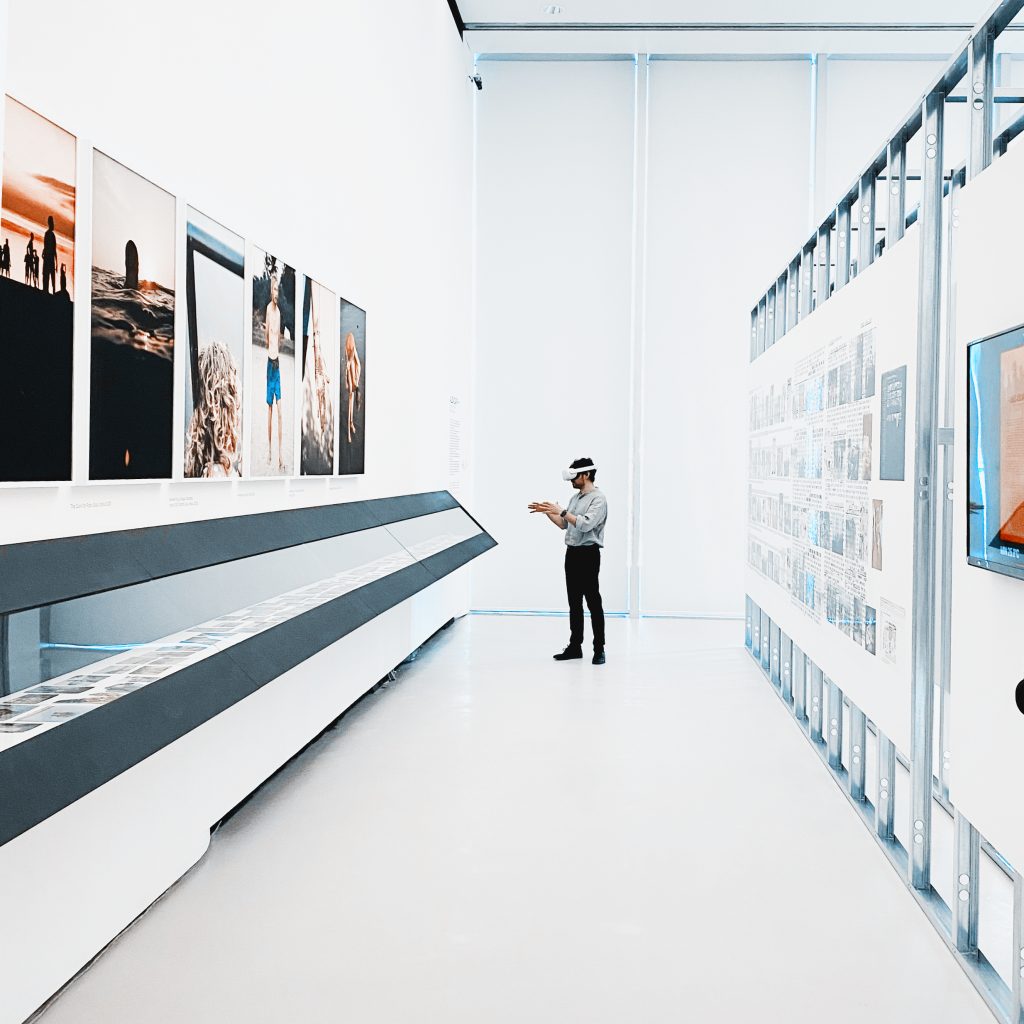During the second leg of our tour, we took Osaka’70 to MAXXI, the Museum of XXI Century Arts which houses part of the Sacripanti Fund (the documents in the other part of the Fund are kept at the Accademia di San Luca, you can find our article here). On the tour we spoke with Elena Tinacci and Laura Felci, two members of the MAXXI museum staff, as they visited the pavilion.
Elena Tinacci has been part of the permanent staff of the MAXXI museum since 2010: initially, she dealt with architecture archives, and she currently carries out research aimed at enhancing MAXXI Architecture collections through exhibitions and publications.
Since 2015, Laura Felci has been the head of MAXXI Architecture Collections.
After the visit, the dialogue focused on the reconstruction of the technical details of the pavilion, and especially on the pavilion’s surroundings. We present here a synopsis of what was discussed.
How do we draw the limits of a virtual experience?
How do we limit the boundaries of architectural space, if we have a potentially infinite horizon?
Sacripanti’s pavilion in VR is located on an island, which we have called the island of Osaka’70.
This choice was dictated both by technical issues and in order to establish what we wanted the user to perceive in the architecture. During the design of the experience, we gave a lot of importance to the surrounding area, as inevitably it will become part of the user’s perception of the pavilion.

Since the pavilion was never realized, it seemed strange to integrate it into an environment that never “welcomed” it.
Therefore, we decided to contain the model within the details Sacripanti left us, surrounding it with a neutral environment, without the need to mark where one part ends and the other part begins.
We decided a boundary of water could be way to carry out this function: a natural border that doesn’t take away the importance of the main focus of the scene.
For us it is important to place the architecture in context, so we decided to replicate, through some sounds, where the pavilion would have been located: the Expo of 1970.
At the corners of the island, while you admire the work from the outside, you can hear, carried by the wind, the soundtracks of the pavilions adjacent to the Italian one.
Thanks to historiographic research, we have extrapolated the melodies of the period, some of which were created specifically for the Exhibition.
With Elena Tinacci and Laura Felci, we talked about the importance of these references: how they are necessary if you bring an architecture into VR and how to highlight them without losing the metaphysical aspect of the visit.
If you want to know more about what we do or to visit the pavilion write us at: info@poplab-team.org